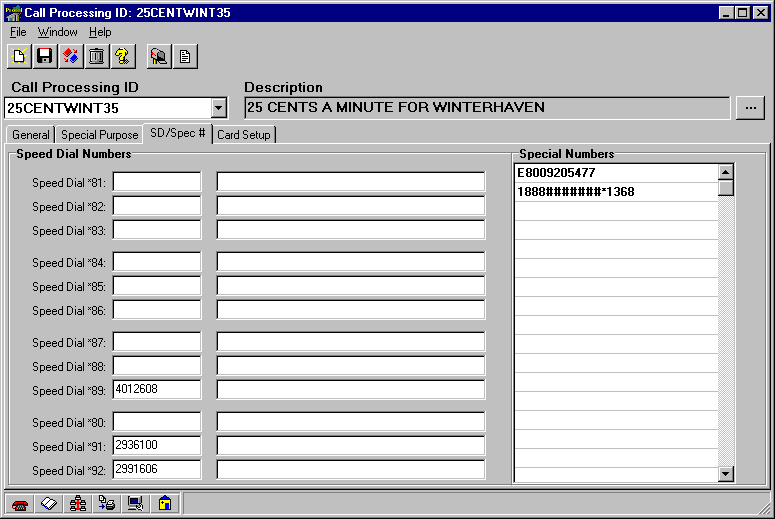SD/Spec #
Use the Speed Dial/Special # tab of the
Call Processing window to program speed dialed numbers (*81 through *92) and any restricted or rerouted numbers (Special Numbers).
To open the Speed Dial/Special # tab, click on the
Configuration button in either the Navigator or the Navbar and select Call Processing Records from the pull-down menu that appears. The General tab is the first tab that is displayed when the Call Processing window is opened. Click on the SD/Spec # tab.

When a payphone user dials a Speed Dial number (ex. *81), the payphone dials the number that you enter into the first (narrower) column. Enter a description for the speed dialed number in the second (wider) column.
The Special Numbers section, ruled and with a scrollbar, are blocked or rerouted numbers. A number that is entered here, using the formatting described below, will either be blocked (user hears an erroneous error code) or it will be sent through a different route than what would have been normal in the regular routing scheme of Panorama.
1. Enter the number to be blocked or rerouted. If the number does not begin with a 0 or 1, enter a star character (*) as the first character of the string. Following are different types of
ìwild cardsî that are available: